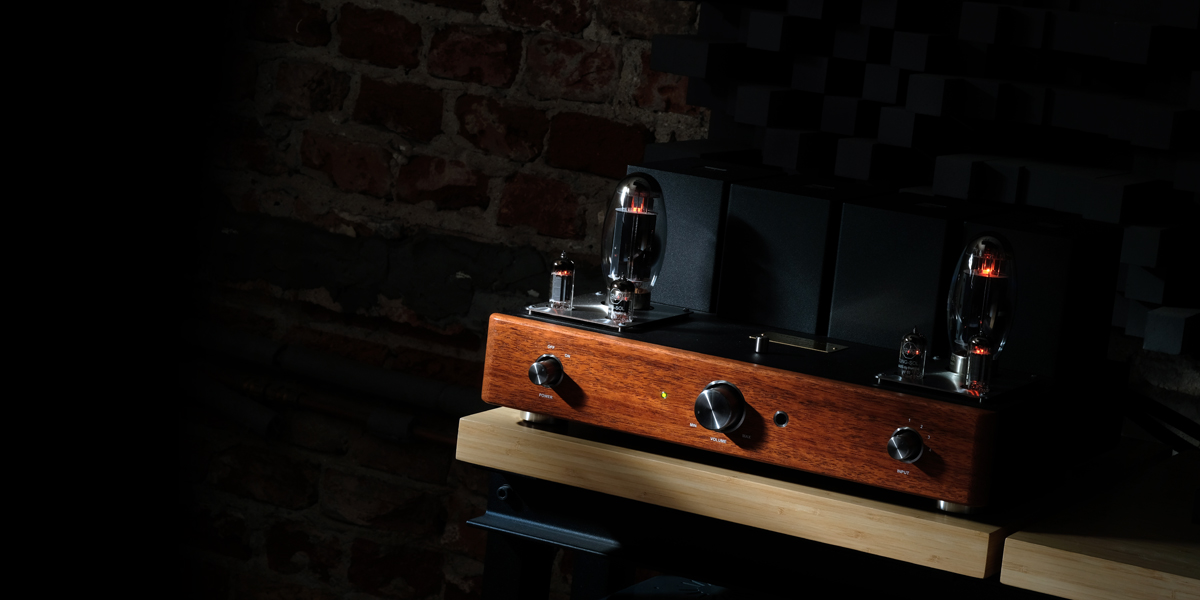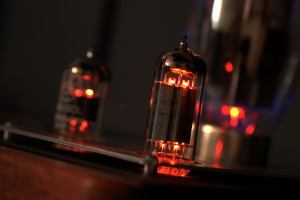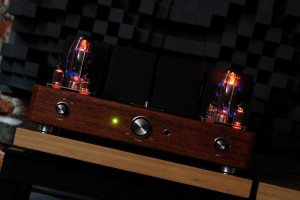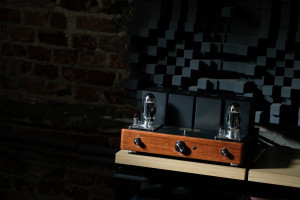Tube audio devices seem to be as relevant and popular now as they were say a decade or two ago. Many enthusiasts wouldn’t look in any other direction knowing that such products can be easily had brand new today. Perpetual demand for this hardware naturally incentivizes manufacturers to provide it, and this report tackles one such case, proudly made here in Poland. Audio Reveal Second integrated amplifier has arrived, enjoy!
Introduction
These are interesting times for us audio enthusiasts. Abundance of available product types informs us that nothing ever gets truly outdated in this hobby. Although top popularity spots are quite obvious, neither digital music completely replaced physical carriers, nor solid-state amps sent valve decks into oblivion. Some of us like to touch and take a whiff of a freshly bought vinyl, some favour convenience of streaming services handled via smartphones. Some like stout power dressed in a petite class D packages, whereas others enjoy pleasant glow of hefty valve hardware. There’s no right and wrong here, the audio bubble is large enough to accommodate technology both old and new. But the fact of it all fit inside the same capacious hobbyist frame never ceases to amaze me. As an audio reporter for a living, I say aye to any product type I can handle and write about in fashion informative and hopefully entertaining to read, however there are several natural limitations of what’s possible. My nil experience with CD players and everything vinyl leaves them off the menu, and usually low power amps follow accordingly as I don’t own high efficiency speakers capable of fully exploiting them. Nonetheless, once in a while stars align just so to unlock such challenges, and today’s product fits the description to perfection. Although unplanned, it became feasible due to external factors.
As an audio reporter for a living, I say aye to any product type I can handle and write about in fashion informative and hopefully entertaining to read, however there are several natural limitations of what’s possible. My nil experience with CD players and everything vinyl leaves them off the menu, and usually low power amps follow accordingly as I don’t own high efficiency speakers capable of fully exploiting them. Nonetheless, once in a while stars align just so to unlock such challenges, and today’s product fits the description to perfection. Although unplanned, it became feasible due to external factors. About a year ago I visited the Nautilus audio shop, located here in Warsaw mere 15-minute drive away from my HQ. Although the highlight of the social event that took place back then had nothing to do with this report’s product, that’s when I was introduced to the local Audio Reveal brand under its parent company Altronik. Their owner – Michał Posiewka – who was also there, explained that he’s been an electronic designer specialized in alarm and access control systems since 1989, and an audio enthusiast for some 20 years or so. He started from Mission speakers with NAD, then came Focal with one of hybrid machines by Unison Research, followed by the same manufacturer’s push-pull amp based on EL34 glass.
About a year ago I visited the Nautilus audio shop, located here in Warsaw mere 15-minute drive away from my HQ. Although the highlight of the social event that took place back then had nothing to do with this report’s product, that’s when I was introduced to the local Audio Reveal brand under its parent company Altronik. Their owner – Michał Posiewka – who was also there, explained that he’s been an electronic designer specialized in alarm and access control systems since 1989, and an audio enthusiast for some 20 years or so. He started from Mission speakers with NAD, then came Focal with one of hybrid machines by Unison Research, followed by the same manufacturer’s push-pull amp based on EL34 glass. Past transitioning from transistors to tubes Michał never looked back, but his skills and willingness to design something of his own eventually kicked in. In 2016 he got to work on his first amplifier prototype. That’s when the Audio Reveal brand was officially registered, whereas his son came up with its self-explanatory name. Early prototypes included EL34 tubes, but in search of more power Michał leaned towards KT88 beam tetrodes, set as pentodes in purist single-ended fashion. It took two years of R&D and field-testing to land a finished introductory product, simply baptized as Audio Reveal First. But the most intriguing thing to me was found elsewhere.
Past transitioning from transistors to tubes Michał never looked back, but his skills and willingness to design something of his own eventually kicked in. In 2016 he got to work on his first amplifier prototype. That’s when the Audio Reveal brand was officially registered, whereas his son came up with its self-explanatory name. Early prototypes included EL34 tubes, but in search of more power Michał leaned towards KT88 beam tetrodes, set as pentodes in purist single-ended fashion. It took two years of R&D and field-testing to land a finished introductory product, simply baptized as Audio Reveal First. But the most intriguing thing to me was found elsewhere.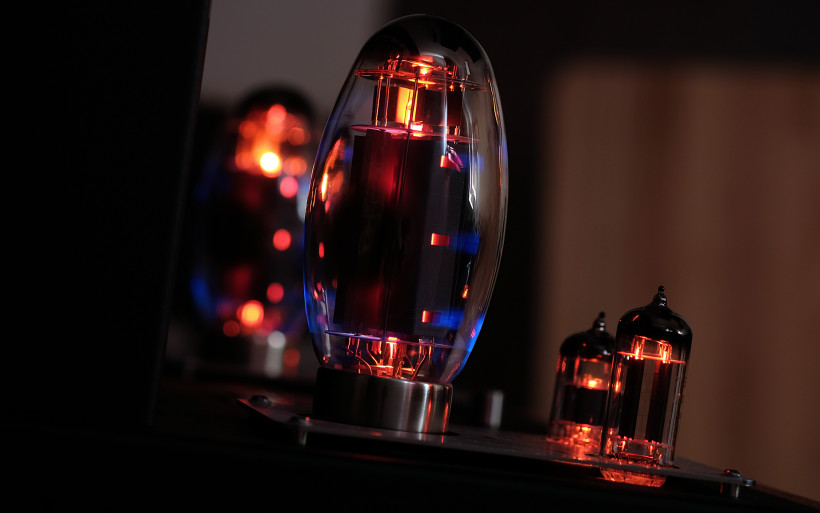 Many small boutique operations usually have a hard time finding a distribution pipeline, but not today’s. As a customer at the Nautilus shop, Michał mentioned to its staff that he had an amplifier ready, which interested this company’s CEO Robert, and what happened next is easy to predict. But most importantly, the former gent’s large scale operation is known for many well-established oftentimes luxurious brands; Accuphase, Siltech, Ayon, Boenicke Audio, Avantgarde Acoustics and Transrotor to name just a few. Audio Reveal had to strike Robert as quite special, otherwise he wouldn’t bother, whereas now I had the chance to learn why. Just to make this assignment possible, Audio Reveal Second integrated amplifier was delivered along with a suitable load in form of Spendor’s Classic 1/2 monitors. The game was afoot.
Many small boutique operations usually have a hard time finding a distribution pipeline, but not today’s. As a customer at the Nautilus shop, Michał mentioned to its staff that he had an amplifier ready, which interested this company’s CEO Robert, and what happened next is easy to predict. But most importantly, the former gent’s large scale operation is known for many well-established oftentimes luxurious brands; Accuphase, Siltech, Ayon, Boenicke Audio, Avantgarde Acoustics and Transrotor to name just a few. Audio Reveal had to strike Robert as quite special, otherwise he wouldn’t bother, whereas now I had the chance to learn why. Just to make this assignment possible, Audio Reveal Second integrated amplifier was delivered along with a suitable load in form of Spendor’s Classic 1/2 monitors. The game was afoot.
Build
The product arrived dressed in a double cardboard, substantial enough to request two pairs of hands and some effort. The inner box stored several thick foam levels, cut to perfectly accommodate the main ingredient clad in a protective fabric, a handy RC and a separate compartment with all necessary tubes inside. Overall packaging scheme was modest yet practical, nicely executed, and all in all buttoned up. The amplifier itself was easy to remove and the manufacturer went the extra mile on unique remote control wand. Many top tier audio operations rely on OEM controllers, separated one from another only via different stickers. Michał’s own unit features volume up/down buttons and two gently bent steel parts screwed together, whereas its top and bottom sections are made of Merbau wood. It’s rather obvious that effort was put into this custom-made RC. Audio Reveal First measures (W x H x D) 476 x 410 x 220mm and weighs healthy 33kg. Nothing less was expected, it’s a full-fledged integrated tube amplifier after all. Substantial frame and mass are inherent to its breed. Today’s is a class A single-ended dual mono affair, free from any additional features so popular these days. No DACs, streamers or phono stages. Each its channel outputs 20W into 4Ω loads at 1kHz. Frequency range is 20 – 25kHz (+/-0.6 dB/1W), input impedance is 50kΩ and nominal power draw is 240W. Unsurprisingly the product gets warm rather quickly and needs 60 seconds to stabilize all voltages upon powering it on.
Audio Reveal First measures (W x H x D) 476 x 410 x 220mm and weighs healthy 33kg. Nothing less was expected, it’s a full-fledged integrated tube amplifier after all. Substantial frame and mass are inherent to its breed. Today’s is a class A single-ended dual mono affair, free from any additional features so popular these days. No DACs, streamers or phono stages. Each its channel outputs 20W into 4Ω loads at 1kHz. Frequency range is 20 – 25kHz (+/-0.6 dB/1W), input impedance is 50kΩ and nominal power draw is 240W. Unsurprisingly the product gets warm rather quickly and needs 60 seconds to stabilize all voltages upon powering it on. As a single-ended device, Audio Reveal Second incorporates only one power tube per channel, here Tung-Sol’s KT150 beam tetrode set as a pentode. The same manufacturer’s 12AX7 (ECC83) double triode handles a pre-amplifier’s input, from where signal goes to a driver tube, gold-pinned 12BH7AEH (ECC82) double triode by Electro-Harmonix. The product’s substantial base loaded with two tube sections plus four cubes just behind, contributes to a very classy look. It’s quite clear what Michał wanted to achieve, but the devil is in the details.
As a single-ended device, Audio Reveal Second incorporates only one power tube per channel, here Tung-Sol’s KT150 beam tetrode set as a pentode. The same manufacturer’s 12AX7 (ECC83) double triode handles a pre-amplifier’s input, from where signal goes to a driver tube, gold-pinned 12BH7AEH (ECC82) double triode by Electro-Harmonix. The product’s substantial base loaded with two tube sections plus four cubes just behind, contributes to a very classy look. It’s quite clear what Michał wanted to achieve, but the devil is in the details. Audio Reveal Second’s thick front made of Merbau wood incorporates all usual suspects. The main on/off knob is on the left. Upon powering on the product, a single two-coloured LED next in line blinks red for a minute, and then goes green to indicate full readiness to work. The big very smooth central volume knob connects to an analogue potentiometer inside. The neighbouring petite window hides a RC receiver, and an input selector is found on the front panel’s far right end. The machine sits on four aluminium pucks, each with its own rubber O-ring. The business end’s both sides feature mirrored four gold-plated brass RCAs just next to speaker posts with translucent caps and separate terminals for 4/8Ω loads. These connections will gladly accommodate each type of cable confection. The IEC inlet is in the middle.
Audio Reveal Second’s thick front made of Merbau wood incorporates all usual suspects. The main on/off knob is on the left. Upon powering on the product, a single two-coloured LED next in line blinks red for a minute, and then goes green to indicate full readiness to work. The big very smooth central volume knob connects to an analogue potentiometer inside. The neighbouring petite window hides a RC receiver, and an input selector is found on the front panel’s far right end. The machine sits on four aluminium pucks, each with its own rubber O-ring. The business end’s both sides feature mirrored four gold-plated brass RCAs just next to speaker posts with translucent caps and separate terminals for 4/8Ω loads. These connections will gladly accommodate each type of cable confection. The IEC inlet is in the middle. Audio Reveal Second’s entire enclosure is made of 2mm thick powder-coated steel sheets, gently rounded at edges and perforated in multiple places to improve venting. From a bird’s eye view we see two slightly elevated stainless plates, each with three openings labeled to mount necessary tubes without a miss. The gap just under these bases secures cages meant to protect glass components from any mechanical damage. My loaner didn’t have these just yet, but I was told that they’re ready and available upon request. A nice golden nameplate in-between tube sections lists the Second’s adherence to the purist single-ended dual-mono class A club, which double the number of output and power transformers expresses rather well. Four in total housed in their own enclosures are the key reason behind today’s heft. The Second also incorporates 11dB of global negative feedback, which can be deepened by 3,2dB via a petite knob just below the nameplate. The letter ‘F’ on this dial’s top is of course a short from the word ‘feedback’.
Audio Reveal Second’s entire enclosure is made of 2mm thick powder-coated steel sheets, gently rounded at edges and perforated in multiple places to improve venting. From a bird’s eye view we see two slightly elevated stainless plates, each with three openings labeled to mount necessary tubes without a miss. The gap just under these bases secures cages meant to protect glass components from any mechanical damage. My loaner didn’t have these just yet, but I was told that they’re ready and available upon request. A nice golden nameplate in-between tube sections lists the Second’s adherence to the purist single-ended dual-mono class A club, which double the number of output and power transformers expresses rather well. Four in total housed in their own enclosures are the key reason behind today’s heft. The Second also incorporates 11dB of global negative feedback, which can be deepened by 3,2dB via a petite knob just below the nameplate. The letter ‘F’ on this dial’s top is of course a short from the word ‘feedback’. I’d have to remove today’s bottom cover in order to get to its inside, which I didn’t do. Substantial mass wasn’t a showstopper, on the contrary to the fact that the product was a shop loaner, hence Michał’s description will have to do. Power transformers by the Polish guru Leszek Ogonowski are annealed EI-core types with 0.3mm thick laminations, whereas Hammond supplied their output counterparts. Caps inside are Mundorf’s Supreme range, Nichicon’s electrolytic and Wima’s polyprophylene models. Internal wiring is OFC copper. Ohmite and Vishay provided resistors, and relays are by Takamisawa. All circuitry was designed by Michał, and as such it doesn’t rely on any OEM modules.
I’d have to remove today’s bottom cover in order to get to its inside, which I didn’t do. Substantial mass wasn’t a showstopper, on the contrary to the fact that the product was a shop loaner, hence Michał’s description will have to do. Power transformers by the Polish guru Leszek Ogonowski are annealed EI-core types with 0.3mm thick laminations, whereas Hammond supplied their output counterparts. Caps inside are Mundorf’s Supreme range, Nichicon’s electrolytic and Wima’s polyprophylene models. Internal wiring is OFC copper. Ohmite and Vishay provided resistors, and relays are by Takamisawa. All circuitry was designed by Michał, and as such it doesn’t rely on any OEM modules. Audio Reveal Second proved to be very stable and silent. Audible hum on speakers wasn’t crazy even at full blast. Michał explained that long-term reliability and internal silence were as important to him as was sound quality. Circuit simplicity inherent for today’s type oftentimes results in a working prototype done rather quickly, however many designers would agree that remaining criteria and associated optimizations are the real time and money sink. This report’s designer simply confirmed this, but the more mileage I got out of his integrated deck, the more I understood that it was a result of passion more than anything else. Michał established his audio business because of it in the first place, which is why he designed and made possibly the best hardware he could and would like to own. At least that’s the firm impression I got during several phone calls the two of us had.
Audio Reveal Second proved to be very stable and silent. Audible hum on speakers wasn’t crazy even at full blast. Michał explained that long-term reliability and internal silence were as important to him as was sound quality. Circuit simplicity inherent for today’s type oftentimes results in a working prototype done rather quickly, however many designers would agree that remaining criteria and associated optimizations are the real time and money sink. This report’s designer simply confirmed this, but the more mileage I got out of his integrated deck, the more I understood that it was a result of passion more than anything else. Michał established his audio business because of it in the first place, which is why he designed and made possibly the best hardware he could and would like to own. At least that’s the firm impression I got during several phone calls the two of us had.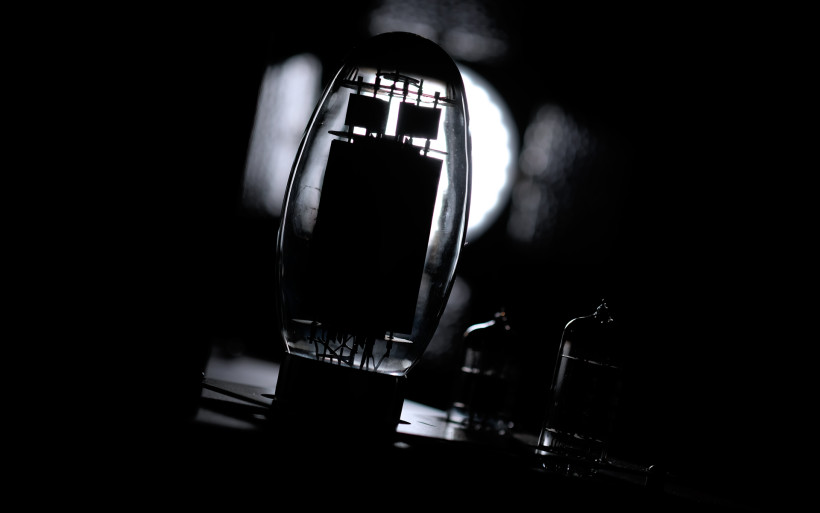 If Audio Reveal Second strikes you as a mild DIY case on photos, in reality it’s anything but. It operates flawlessly, and it’s been a while since I’ve used a volume control this gradual, instantly responsive, precise and smooth. Later on Michał explained that he slowed down the servo-motor by customizing its controller. Today’s is a fully mature product from mechanical and practical point of view. Wood combined with stainless steel as shown on its forehead somewhat resembles hardware by Unison Research. Even if this company inspired Michał in one way or another, he did several his own twists to swiftly set his work apart, and did so truly well. His attention to details is quite fanatical in many places. Up close we see finely inlaid steel rings around evenly positioned knobs, but even a RC receiver and LED got their own such additions executed equally well. The loaner’s powder-coated enclosure goes beyond paint jobs typical in its price range, to noticeably up the ante on premium visual and overall feeling. All in all, a truly great job.
If Audio Reveal Second strikes you as a mild DIY case on photos, in reality it’s anything but. It operates flawlessly, and it’s been a while since I’ve used a volume control this gradual, instantly responsive, precise and smooth. Later on Michał explained that he slowed down the servo-motor by customizing its controller. Today’s is a fully mature product from mechanical and practical point of view. Wood combined with stainless steel as shown on its forehead somewhat resembles hardware by Unison Research. Even if this company inspired Michał in one way or another, he did several his own twists to swiftly set his work apart, and did so truly well. His attention to details is quite fanatical in many places. Up close we see finely inlaid steel rings around evenly positioned knobs, but even a RC receiver and LED got their own such additions executed equally well. The loaner’s powder-coated enclosure goes beyond paint jobs typical in its price range, to noticeably up the ante on premium visual and overall feeling. All in all, a truly great job.
Sound
In order to review Audio Reveal Second, fidata HFAS1-S10U handled storage and transport, then LampizatOr Pacific DAC (KR Audio T-100/Living Voice 300B + KR Audio 5U4G Ltd. Ed.) took over to pass the signal either to today’s, Bakoon AMP-13R, or Thöress DFP line stage and then to the FirstWatt F7. From there a Boenicke Audio S3 speaker cable stepped in to connect to either Boenicke Audio W11SE+ floorstanders, or Spendor Classic 1/2. All amps were powered by LessLoss C-MARCs from a GigaWatt PC-3 SE EVO+ power conditioner, fronted by the same manufacturer’s LC-3 EVO cable. Interconnects used were Boenicke Audio IC3 CG and Amber-modded Audiomica Laboratory Erys Excellence if needed. The USB chain included the full iFi audio stack; a micro iUSB3.0, nano iGalvanic3.0, three Mercury USB cables in-between plus one 9V iPower. The battle plan was straightforward. At first I was interested in hearing what the Second’s 20wpc could do with my daily speakers. Once this was sorted, then the local amp was connected to its recommended load by Spendor, which the local Nautilus shop’s crew and Robert labeled as highly synergistic. Then the Second skirmished with its main sparring partner in form of FirstWatt F7 fronted by the Thöress DFP line stage. That stereo amp by Nelson Pass was the closest to today’s on power and topology I had nearby. And lastly, just because the Bakoon AMP-13R sported enough output to also drive Spendors easily, it had to compare to Michał’s device.
The battle plan was straightforward. At first I was interested in hearing what the Second’s 20wpc could do with my daily speakers. Once this was sorted, then the local amp was connected to its recommended load by Spendor, which the local Nautilus shop’s crew and Robert labeled as highly synergistic. Then the Second skirmished with its main sparring partner in form of FirstWatt F7 fronted by the Thöress DFP line stage. That stereo amp by Nelson Pass was the closest to today’s on power and topology I had nearby. And lastly, just because the Bakoon AMP-13R sported enough output to also drive Spendors easily, it had to compare to Michał’s device. If we think about a tube stereotype which includes sweetness, warmth, generous saturation and mild polite behaviour in general, then today’s isn’t that and that’s very clear. Michał’s amp with my daily speakers introduced itself as agile, majestic, spatially present and very much open-throated. It sang with my reference load like it was a far bigger more powerful amp to begin with, and nothing about its performance was casual. More than a year ago I’d heard something of the sort with Ayon Scorpio on the job with my previous even more difficult Boenicke W8 speakers. Now the same stout aroma was sensible in air, but because of a single-ended KT150 machine and not quad KT88s in a push-pull deck. Interestingly, up to this point I wasn’t quite aware that SE devices were capable of doing what the Second did.
If we think about a tube stereotype which includes sweetness, warmth, generous saturation and mild polite behaviour in general, then today’s isn’t that and that’s very clear. Michał’s amp with my daily speakers introduced itself as agile, majestic, spatially present and very much open-throated. It sang with my reference load like it was a far bigger more powerful amp to begin with, and nothing about its performance was casual. More than a year ago I’d heard something of the sort with Ayon Scorpio on the job with my previous even more difficult Boenicke W8 speakers. Now the same stout aroma was sensible in air, but because of a single-ended KT150 machine and not quad KT88s in a push-pull deck. Interestingly, up to this point I wasn’t quite aware that SE devices were capable of doing what the Second did. This report’s Audio Reveal pushed my Swiss speakers far without typical signs of them being underpowered; upstairs twitch, shout, and bass thinness or wobble. Lack of these culprits marked the local integrated as feasible for difficult loads, which also informs us how much power is truly needed to get high SPL and satisfactory propulsion. However, neither similar on this count Bakoon nor FirstWatt F7 performed as efficiently and easefully with the W11 SE+. I’m keen to think that the Second’s dual-mono topology and power supply had something to do with the respectable sonic result. Still, this wasn’t as relevant as the fact of this amp to quite an extent capable of showcasing what my speakers were all about. On this count only Alberto Guerra’s Vivace monos and Kinki Studio EX-M1 acted noticeably more effortlessly and in control, but that was hardly any surprise given their output.
This report’s Audio Reveal pushed my Swiss speakers far without typical signs of them being underpowered; upstairs twitch, shout, and bass thinness or wobble. Lack of these culprits marked the local integrated as feasible for difficult loads, which also informs us how much power is truly needed to get high SPL and satisfactory propulsion. However, neither similar on this count Bakoon nor FirstWatt F7 performed as efficiently and easefully with the W11 SE+. I’m keen to think that the Second’s dual-mono topology and power supply had something to do with the respectable sonic result. Still, this wasn’t as relevant as the fact of this amp to quite an extent capable of showcasing what my speakers were all about. On this count only Alberto Guerra’s Vivace monos and Kinki Studio EX-M1 acted noticeably more effortlessly and in control, but that was hardly any surprise given their output.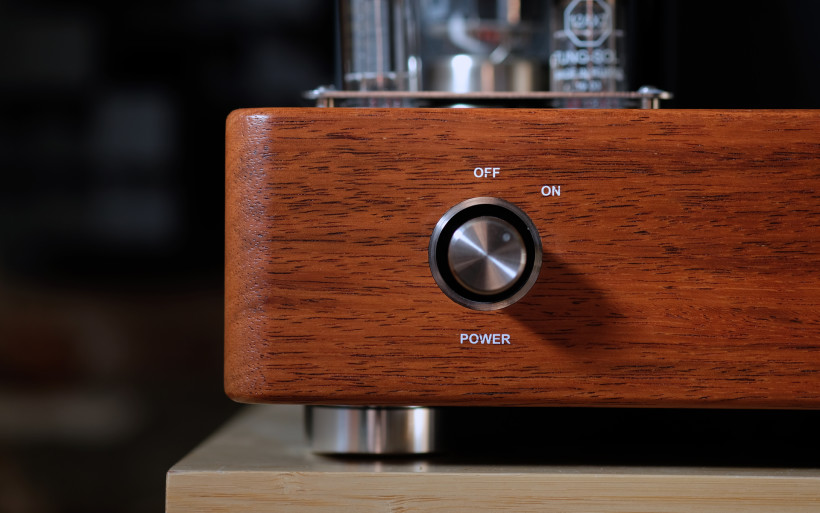 Past the introductory courtesies it was time to swap speakers and include Spendor Classic 1/2. How exactly these monitors behaved versus my Boenicke W11 SE+ is a story for another time, however it became very clear why the former was recommended to me as a solid companion for Michał’s amp. This set instantly unlocked the big picture instead of focusing my attention on a specific feature or two, which doesn’t happen every other day. To actually pull this off, overall performance has to be composed and uniform enough to not show any obvious weaknesses, and that’s exactly what Classic 1/2 monitors fed by the Second did. The result was spatially majestic, full, tactile, precise, tonally a spot on and balanced. Fabulous elasticity, swiftness, insight and control went hand in hand with textural generosity, openness and bloom. On spatial qualities, shove and overall complexity, this pleasantly big bore sound would make many costlier setups blush.
Past the introductory courtesies it was time to swap speakers and include Spendor Classic 1/2. How exactly these monitors behaved versus my Boenicke W11 SE+ is a story for another time, however it became very clear why the former was recommended to me as a solid companion for Michał’s amp. This set instantly unlocked the big picture instead of focusing my attention on a specific feature or two, which doesn’t happen every other day. To actually pull this off, overall performance has to be composed and uniform enough to not show any obvious weaknesses, and that’s exactly what Classic 1/2 monitors fed by the Second did. The result was spatially majestic, full, tactile, precise, tonally a spot on and balanced. Fabulous elasticity, swiftness, insight and control went hand in hand with textural generosity, openness and bloom. On spatial qualities, shove and overall complexity, this pleasantly big bore sound would make many costlier setups blush. Meaty open-throated performance with large vivid utmost sensible sound sources, was respectable all by itself. But freedom from stuffiness, bloat and abnormal temperature rise is what made everything go click. The Classic 1/2 plus the Second emerged as the full care package just as I was told it would, but my understanding of this fact came after a round with Spendors fed by the Thöress DFP/FirstWatt F7 combo. Although features such as slamming potency, on-stage presence and generously articulate midband remained the same, the two-piece set audibly lowered tonal balance to net sonic flavour a bit darker, heftier, and with spatial plans aside the closest one a tad more distant. Now Spendors were more gravitational, earthlier and cloudier. Top end remained as fine, weighty and extended as previously, but now was less shimmery versus the Second. Although the F7 all by itself wasn’t slower than today’s in the grand scheme of things, it surely contributed to the more relaxed and calmer effect, which somewhat reminded me of what my Trilogy 925 used to do. It packed a punch, but in a silken glove.
Meaty open-throated performance with large vivid utmost sensible sound sources, was respectable all by itself. But freedom from stuffiness, bloat and abnormal temperature rise is what made everything go click. The Classic 1/2 plus the Second emerged as the full care package just as I was told it would, but my understanding of this fact came after a round with Spendors fed by the Thöress DFP/FirstWatt F7 combo. Although features such as slamming potency, on-stage presence and generously articulate midband remained the same, the two-piece set audibly lowered tonal balance to net sonic flavour a bit darker, heftier, and with spatial plans aside the closest one a tad more distant. Now Spendors were more gravitational, earthlier and cloudier. Top end remained as fine, weighty and extended as previously, but now was less shimmery versus the Second. Although the F7 all by itself wasn’t slower than today’s in the grand scheme of things, it surely contributed to the more relaxed and calmer effect, which somewhat reminded me of what my Trilogy 925 used to do. It packed a punch, but in a silken glove. The two-box team had an advantage over the Second on midband’s greater textural complexity and instrumental sculpting skills. The ratio of outlines to their internal contents the former had more even. Geared towards agility, propulsion and carefully dosed stiffness, the integrated loaner in this context naturally had to position itself a small step behind its opponents on mid realm’s richness, but with Spendors still struck a better overall balance. The more hours I had under my belt with these naturally dense and muscular speakers, the more and more clear it became that the Polish machine’s inherent speed, spatial grandeur, open-throatedness and plain ferocity upon demand, made it a spot on match for them. In my room and with my own biases on mind, the Second with Classic 1/2 monitors took the cake instead of the equally elegant albeit audibly different Thöress DFP/FirstWatt F7 package. That’s quite the achievement considering the significant price gap between contestants included.
The two-box team had an advantage over the Second on midband’s greater textural complexity and instrumental sculpting skills. The ratio of outlines to their internal contents the former had more even. Geared towards agility, propulsion and carefully dosed stiffness, the integrated loaner in this context naturally had to position itself a small step behind its opponents on mid realm’s richness, but with Spendors still struck a better overall balance. The more hours I had under my belt with these naturally dense and muscular speakers, the more and more clear it became that the Polish machine’s inherent speed, spatial grandeur, open-throatedness and plain ferocity upon demand, made it a spot on match for them. In my room and with my own biases on mind, the Second with Classic 1/2 monitors took the cake instead of the equally elegant albeit audibly different Thöress DFP/FirstWatt F7 package. That’s quite the achievement considering the significant price gap between contestants included. At this point I knew well what the Second could do and how. This deck’s fairly low power output was just a disguise for fully confident ballsy performance; quick energetic blows served as swiftly as they were grand in scale, and willingness to go against even the most complex dynamic challenges without a drop of sweat. It’s fair to ask then why one would go after this transistor-alike stout voicing executed via tubes instead of silicon, but there’s a method in this externally impractical plan. Although the Second doesn’t prioritize politeness, romanticism, relaxation and chunk, it’s a single-ended class A specimen nonetheless. This means that its potently beefy, explicit and clean core also features that particular sort of tunefulness, expressiveness and moisture exclusive for valves. Put shortly, on listed music-infusing counts today’s goes to places where vast majority of transistors won’t.
At this point I knew well what the Second could do and how. This deck’s fairly low power output was just a disguise for fully confident ballsy performance; quick energetic blows served as swiftly as they were grand in scale, and willingness to go against even the most complex dynamic challenges without a drop of sweat. It’s fair to ask then why one would go after this transistor-alike stout voicing executed via tubes instead of silicon, but there’s a method in this externally impractical plan. Although the Second doesn’t prioritize politeness, romanticism, relaxation and chunk, it’s a single-ended class A specimen nonetheless. This means that its potently beefy, explicit and clean core also features that particular sort of tunefulness, expressiveness and moisture exclusive for valves. Put shortly, on listed music-infusing counts today’s goes to places where vast majority of transistors won’t. Repertoire based on minimalist sets with elevated vocal lines and resonant effects typical for acoustic string instruments, assured me about today’s prowess in rendering sound sources veraciously, delicately and enchantingly without a miss. But one of key upshots was in how this integrated separated individual recordings one from another, and how it transitioned between them. Wild, zealous, stiff and raw in one instance, it gracefully morphed into sensual, calm, meticulous and no less engaging one track later. And the best part? Not even once it sounded forceful, out of steam or dull.
Repertoire based on minimalist sets with elevated vocal lines and resonant effects typical for acoustic string instruments, assured me about today’s prowess in rendering sound sources veraciously, delicately and enchantingly without a miss. But one of key upshots was in how this integrated separated individual recordings one from another, and how it transitioned between them. Wild, zealous, stiff and raw in one instance, it gracefully morphed into sensual, calm, meticulous and no less engaging one track later. And the best part? Not even once it sounded forceful, out of steam or dull. It’s fair to say that agility boosters finely connected with typical class A charm is what Michał managed to accomplish in his Second model. As the natural effect of black backdrop, resolution and cleanliness left the usual sonic criminals associated with similar designs at the door, which naturally contributed to and additionally amplified the already respectable result. This clever mixture of pristine background, lots of torque plus euphonic traits specific only to glowing glass, called for a special opponent in form of the AMP-13R integrated. Let me highlight once more that this petite integrated deck is the most accomplished in my roster regardless of price. At this point it’s quite difficult for me to imagine what this specific Bakoon could do better with suitable speakers nearby, but the key question was whether Spendors in fact were such a company.
It’s fair to say that agility boosters finely connected with typical class A charm is what Michał managed to accomplish in his Second model. As the natural effect of black backdrop, resolution and cleanliness left the usual sonic criminals associated with similar designs at the door, which naturally contributed to and additionally amplified the already respectable result. This clever mixture of pristine background, lots of torque plus euphonic traits specific only to glowing glass, called for a special opponent in form of the AMP-13R integrated. Let me highlight once more that this petite integrated deck is the most accomplished in my roster regardless of price. At this point it’s quite difficult for me to imagine what this specific Bakoon could do better with suitable speakers nearby, but the key question was whether Spendors in fact were such a company.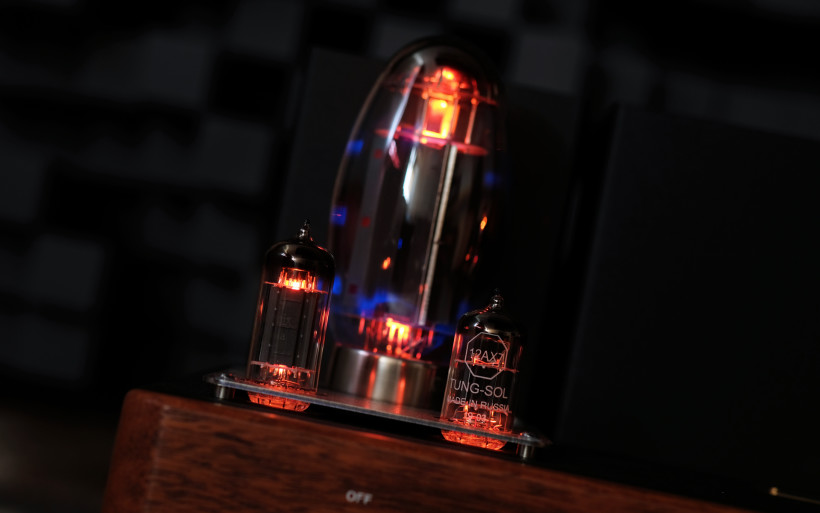 In short, they were. The AMP-13R handled provided Spendors with ease and there was no question about it, whereas the difference between it and today’s narrowed down to two distinctive voicings yet again. The Bakoon positioned itself in-between the Second and team F7/DFP on tonal balance, tissue density and gravitas, whereas on articulation, virtual outlines and sensation of space it secured the top spot. However, on sheer speed and downstairs bite the AMP-13R was the most calm and stately of the group, but not slow. It didn’t introduce any wobble or anything of the sort, but hard deep punches it delivered in very meticulous, precise, elastic and perfectly controlled fashion. In this context the Second’s bass was quicker, more raw and zealous, whereas the as deep F7/DFP set was the most round and chunky of all three cases in comparison. I could go on and on with descriptions of each individual disparity, but the overall message with Spendors was clear. The Bakoon normalized everything, provided the least audible input of its own and had the highest card on nuances and articulation, whereas today’s was the fastest, spatially the most here and now, and injected that unmistakable tube input typical for its breed. I’d pick the Bakoon to know exactly what’s up in my setup, whereas the Second I’d use to follow craves for adrenaline, power and rock/metal music. There were no bad choices here, only different options.
In short, they were. The AMP-13R handled provided Spendors with ease and there was no question about it, whereas the difference between it and today’s narrowed down to two distinctive voicings yet again. The Bakoon positioned itself in-between the Second and team F7/DFP on tonal balance, tissue density and gravitas, whereas on articulation, virtual outlines and sensation of space it secured the top spot. However, on sheer speed and downstairs bite the AMP-13R was the most calm and stately of the group, but not slow. It didn’t introduce any wobble or anything of the sort, but hard deep punches it delivered in very meticulous, precise, elastic and perfectly controlled fashion. In this context the Second’s bass was quicker, more raw and zealous, whereas the as deep F7/DFP set was the most round and chunky of all three cases in comparison. I could go on and on with descriptions of each individual disparity, but the overall message with Spendors was clear. The Bakoon normalized everything, provided the least audible input of its own and had the highest card on nuances and articulation, whereas today’s was the fastest, spatially the most here and now, and injected that unmistakable tube input typical for its breed. I’d pick the Bakoon to know exactly what’s up in my setup, whereas the Second I’d use to follow craves for adrenaline, power and rock/metal music. There were no bad choices here, only different options. The option to adjust negative feedback also deserves several words, as the difference between two available settings was noticeable. The entire test was conducted with the feedback knob set in its default position. Upon turning it audible SPL was lower, which was the natural effect of global feedback a fair bit deeper. But key sonic shifts also included shallower bass, spatially smaller more intimate image, and lesser overall energy. Michał explained that the Second set like so is more fit for late listening sessions, and some speakers might enjoy it more. However, provided Spendors and my daily driver favoured the default knob position more.
The option to adjust negative feedback also deserves several words, as the difference between two available settings was noticeable. The entire test was conducted with the feedback knob set in its default position. Upon turning it audible SPL was lower, which was the natural effect of global feedback a fair bit deeper. But key sonic shifts also included shallower bass, spatially smaller more intimate image, and lesser overall energy. Michał explained that the Second set like so is more fit for late listening sessions, and some speakers might enjoy it more. However, provided Spendors and my daily driver favoured the default knob position more.
Summary
This report’s fine example of a classy tube amp educates us that its kind not only isn’t dead, but can have its typical noise-related issues in check and behave very smoothly. It takes a particular type of an enthusiast to take interest in such a product, but also necessary know-how, commitment and right attitude to land it first. In this context it’s quite clear to me that Michał Posiewka ticked all these checkboxes and has his heart in just the right place, otherwise Audio Reveal Second wouldn’t have happened. That’s how I see it.
At first glance Audio Reveal Second is quite similar to many other tube decks out there, which understandably leaves any visual shock or innovation at the door. Bases loaded with knobs, dials, and transformers in separate compartments just behind exposed tubes, all mark the route as classic as it’s practical. Today’s form clearly follows function, reflects well Michał’s fondness towards this type of aesthetic, and also explains lack of modern ancillaries on board. But he also managed to up the ante on fit’n’finish and overall behaviour significantly enough, to effectively go beyond the industry standard. That’s why his Second looks and feels like a costly audio apparatus well past its infancy days, which is quite the achievement. This story’s audio house was established not too long ago after all.
Audio Reveal Second delivered where it mattered the most, and did so in a very interesting fashion. It swiftly merged beefy transistor devices’ verve, shove and torque with emotional involvement, euphony, delicacy and organic tissue exclusive for tubes. This concoction of traits led to versatile, open, direct, spatially mighty, energetic and engaging sonics, located at the opposite end of boring. Today’s is a highly exciting machine to listen to, whereas the fact that it’s not a push-pull makes it this much spicier considering its agile disposition. Audio Reveal Second is a fully mature purist integrated affair, but above all else a lot of an amp for its not exactly affordable but realistic coin. Such gems deserve broad recognition and I’m happy that I could introduce it to you. ‘Til next time!
Associated Equipment:
- Amplifier: Bakoon AMP-13R, FirstWatt F7
- DAC: LampizatOr Pacific (KR Audio T-100 / Living Voice 300B + KR Audio 5U4G Ltd. Ed.)
- Speakers: Boenicke Audio W11 SE+, Spendor Classic 1/2
- Transport: fidata HFAS1-S10U
- Line stage: Thöress DFP
- Speaker cables: Boenicke Audio S3, LessLoss C-MARC
- Interconnects: Boenicke Audio IC3 CG
- Power components: Gigawatt PC-3 SE EVO+, Gigawatt PF-2 + Gigawatt LC-2 MK2 + Audiomica Laboratory Ness Excellence/LessLoss C-MARC
- Rack: Franc Audio Accesories Wood Block Rack
- Music: NativeDSD
Retail prices of reviewed components in EU (incl. tax):
- Audio Reveal Second: €8’490
Manufacturer: Audio Reveal
Global distribution: Nautilus


